A group of friends are hiking and enjoying the scenery.
 Photo by Evan Sanchez on Unsplash
Photo by Evan Sanchez on UnsplashSelena: “Hey, look at these rocks, they’ve got some unusual textures. There must be hundreds of varieties.”
Amari: “There aren't that many kinds of rocks. I remember from geology class that there are only 3 main rock types."
Blake: "That's really interesting, I don't think many people would know that."
Selena doesn't know much about rocks herself. She decides to do some research so she can start a rock collection.
The Rock Cycle
Rocks are everywhere in all shapes, colors, sizes, and textures — from pebbles on the beach to boulders on hillsides and mountains ranges.
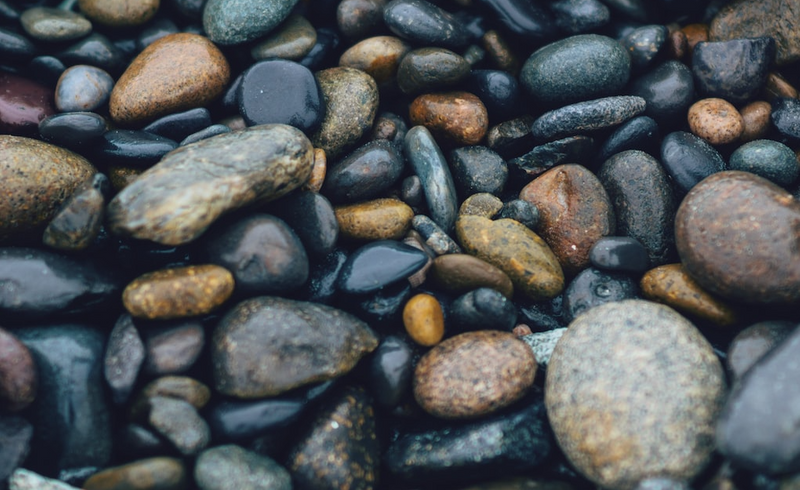
If you're like Selena, you’re probably thinking there must be thousands, if not millions of rocks, right?
Well, the "rock cycle" makes only 3 main rock types:
Igneous rock
Sedimentary rock
Metamorphic rock
Each type has a specific set of physical characteristics.
 Image courtesy of Sheri Amsel via Exploring Nature
Image courtesy of Sheri Amsel via Exploring Nature
Click play on the audio player below to listen to a description of the diagram shown above.
The rock cycle changes rocks from one formation to another by:
Cooling & Crystallization
lava eruptions quickly crystallize & become solid when cool
underground magma slowly cools with or without crystalizing
Compression & Burial
large pieces of rock sink into magma below the earth
becomes solid when cool as it rises to the surface
Compaction & Cementation
layers of tiny rocks, sand, mud, & debris
crushed, squeezed & cemented together
Weathering & Erosion
ice, snow, wind, rain & heat break down & dissolve rocks
spreads minerals, remains from animals, plants & sea life
#1: Igneous Rock
Igneous rock is formed when eruptions from volcanic activity or cracks in the earth's floor cause lava and magma rocks to melt, cool, and crystalize.
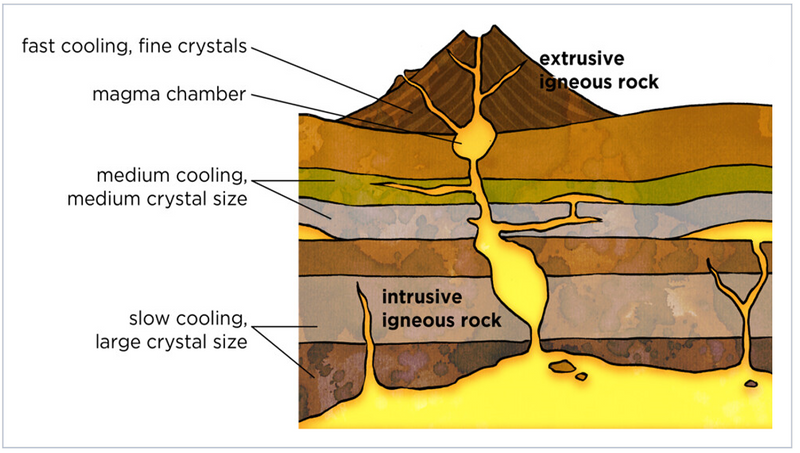
Click play on the audio player below to listen to a description of the diagram shown above.
This process produces 2 basic kinds of igneous rocks:
Extrusive rocks form when lava above ground quickly cools, becomes solid, and crystalizes. This produces fine (or invisible) quartz crystals.
Common extrusive rocks are andesite, basalt, dacite, obsidian, pumice, rhyolite, scoria, and tuff.
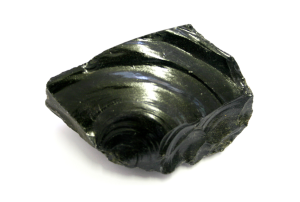
Obsidian
solid lava glass eruptions
hard & brittle volcanic rock
black, smooth glossy appearance
Intrusive rocksform deep underground when magma slowly cools under extreme pressure and produces distinctive crystals.
Common intrusive rocks are diabase, diorite, gabbro, granite, pegmatite, and peridotite.
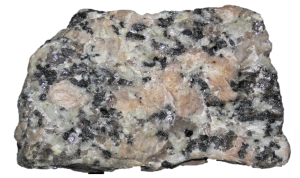
Granite
mainly quartz crystals
dark grains of feldspar & mica minerals
colors of light pink-grey-white
#2: Sedimentary Rock
Sedimentary rock is made from built-up deposits of grains, minerals, tiny rock pieces from older rocks, minerals, animals, plants, and sea life.
Extreme weather and erosion cement materials together into solid layers of sedimentary rock.
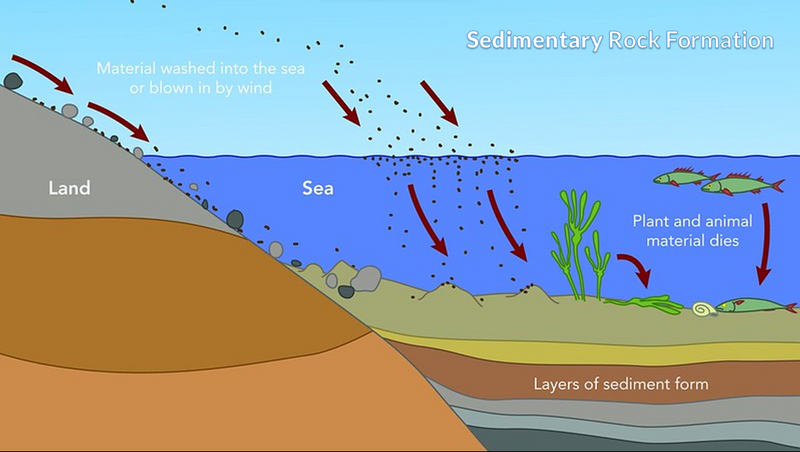
Click play on the audio player below to listen to a description of the diagram shown above.
This process produces 3 types of sedimentary rocks:
Clastic sedimentary rocks are made of pieces of rock, grains, and minerals from old weathered rocks.
Common rocks are breccia, conglomerate, sandstone, siltstone, and shale.
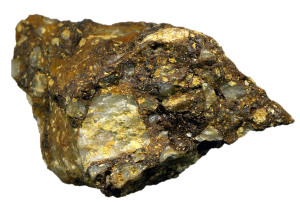
Breccia
small & large pointed rocks
pieces cemented together
color of natural earth tones
Chemical sedimentary rocks are made from buildups of natural minerals and calcium deposits from marine life in rivers and oceans.
Common rocks are dolomites, rock salt, flint, iron ore, and chert.
Chert
cryptocrystalline minerals
quartz minerals
grey, waxy appearance
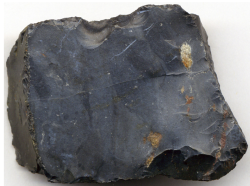
Organic sedimentary rocksare made from buildups of deposits from organic minerals like plants, trees, animal bones, sea shells, and other debris. Common examples are chalk, coal, diatomite, some types of dolomite, and limestone.
Quiz
Which rocks are made from volcanic lava and magma? Select all that apply.
#3: Metamorphic Rock
Metamorphic rocks are igneous and sedimentary rocks that change (meta) or morph (transform) through a process called “metamorphism".
These original rocks physically change, re-crystallize, and become new types of rock when exposed to extreme heat, pressure, and chemical processes.
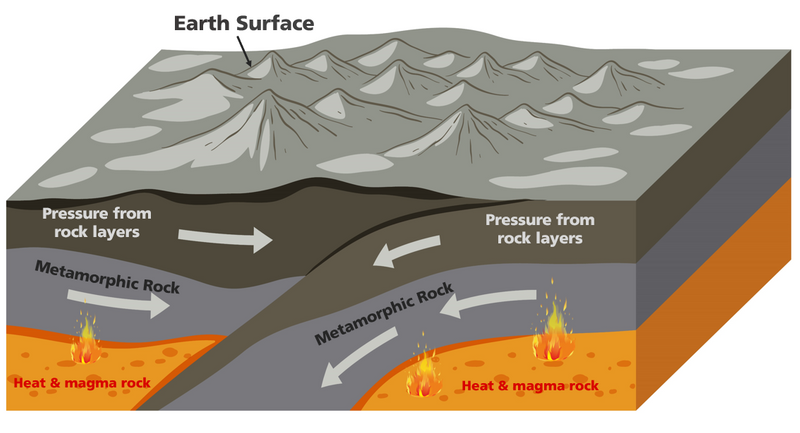
Click play on the audio player below to listen to a description of the diagram shown above.
This process produces two types of metamorphic rocks:
Foliated metamorphic rocks with long, flat, or long-grain minerals stretched and cemented together to form patterns of stripes or layers.
Common rocks are gneiss, phyllite, schist, and slate.
Gneiss
hard, fine-grained rock
thin black & white stripes
clay minerals or mica
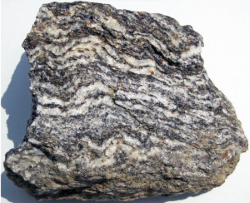
Non-foliated metamorphic rocks are stronger and more solid in texture without visible mineral layers.
Common examples are hornfels, marble, novaculite, quartzite, and skarn.
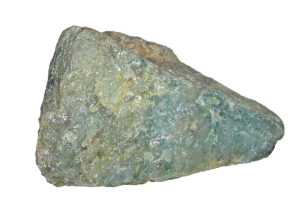
Quartzite
hard, tough, durable solid rock
grains of mineral quartz
quartz sandstone
Identify the Rocks
Selena is looking at 3 rocks in her collection:
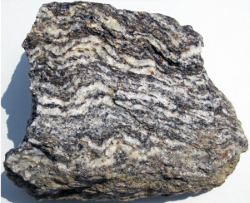

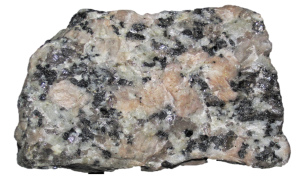
She's trying to identify their rock types from the following list of descriptions:
Description 1:
Granite rock contains quartz crystals with grains of feldspar minerals.
Description 2:
Gneiss rock has a pattern of thin stripes or bands of minerals arranged in layers
Description 3:
Limestone rock contains from grains of rock salt minerals & calcium deposits
Description 4:
Breccia rock is sealed together with sharp-pointed pieces of rock, soil & minerals
Quiz
Which descriptions match the 3 rocks in Selena's collection?
Take Action
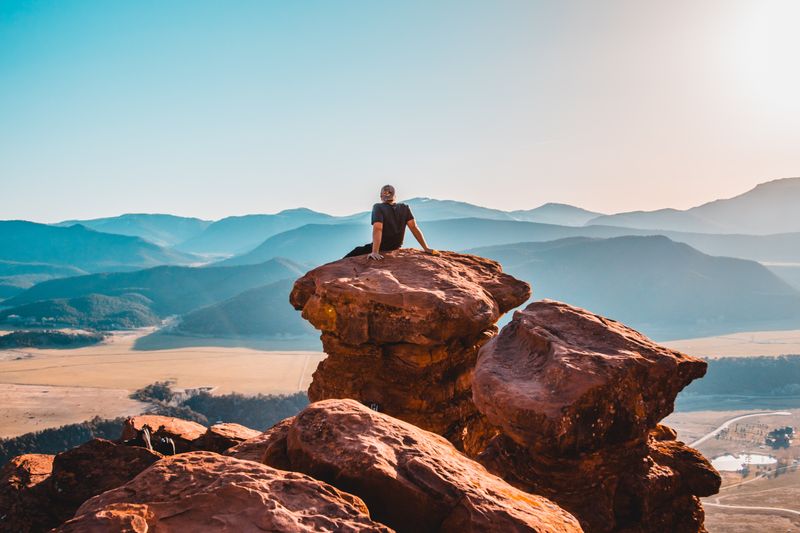 Photo by Jamie Fenn on Unsplash
Photo by Jamie Fenn on UnsplashNow that you've learned about the 3 major rock types, plan a hiking trip or visit a national park, and expand your knowledge:
Your feedback matters to us.
This Byte helped me better understand the topic.
